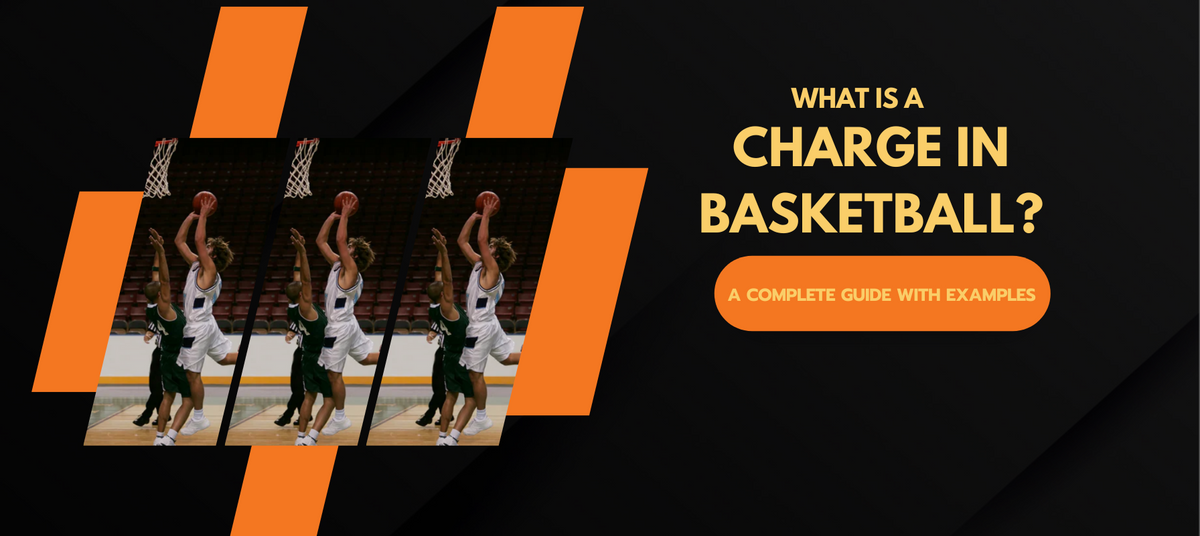
What is a Charge in Basketball? A Complete Guide with Examples
|
|
Time to read 4 min
|
|
Time to read 4 min
Navigating the nuances of basketball rules can feel like learning a new language, especially for parents new to the game. This rings especially true with one of basketball's most debated calls: the charge. So, what is a charge in basketball, and why does it cause so much commotion on and off the court?
Let's break it down: imagine a defensive player setting their feet before an offensive player drives to the basket. If that offensive player makes contact with the defender who’s already established their position, a charging foul could be called, resulting in a turnover. But if any of the defender’s feet are within the restricted area, marked by the semicircle under the basket, it's automatically a blocking foul—a call favoring the offense. This split-second decision-making, along with the upward motion of the offensive player going towards the basket, is what creates intense debate, even among experienced coaches and referees.
Mastering the art of drawing a charge can become a powerful tool for any defensive player. Knowing when to attempt one, and when to back off, is critical for both safety and the flow of the game. It's also important to consider if the offensive player receives the ball in a legal position before initiating contact.
Several factors contribute to a referee calling a charge. A defensive player establish legal guarding position by doing the following:
Defensive players are allowed to move laterally to maintain position in front of an offensive player, as long as they are not encroaching on the offensive player's space and/or moving into their path. If a defender establishes a legal guarding position in the path of a moving offensive player, contact that occurs may result in a charge being called. However, if the defender impedes the progress of the offensive player or causes excessive contact, it could be deemed a blocking foul. It's important to note that even if a defender has established legal guarding position, they can still be called for a blocking foul if the contact is deemed to be excessive or avoidable.
Understanding 'what is a charge basketball?' requires knowing why it's a rule. Charges exist for several reasons:
When an offensive player is called for a charge, several things happen:
Understanding 'what is a charge in basketball?' is fundamental for appreciating the game. By knowing the rules and nuances surrounding charging fouls, players, coaches, and even fans can develop a deeper appreciation for the strategic complexities that unfold on the court.
Charge in Basketball. Charge in Basketball. Charge in Basketball. Charge in Basketball. Charge in Basketball. Charge in Basketball. Charge in Basketball. Charge in Basketball. Charge in Basketball. Charge in Basketball. Charge in Basketball. Charge in Basketball. Charge in Basketball. Charge in Basketball. Charge in Basketball. Charge in Basketball. Charge in Basketball. Charge in Basketball. Charge in Basketball.
Navigating the nuances of basketball rules can feel like learning a new language, especially for parents new to the game. This rings especially true with one of basketball's most debated calls: the charge. So, what is a charge in basketball, and why does it cause so much commotion on and off the court? Let's break it down: imagine a defensive player setting their feet before an offensive player drives to the basket. If that offensive player makes contact with the defender who’s already established their position, a charging foul could be called, resulting in a turnover. But if any of the defender’s feet are within the restricted area, marked by the semicircle under the basket, it's automatically a blocking foul—a call favoring the offense. This split-second decision-making, along with the upward motion of the offensive player going towards the basket, is what creates intense debate, even among experienced coaches and referees.
Defensive players are allowed to move laterally to maintain position in front of an offensive player, as long as they are not encroaching on the offensive player's space and/or moving into their path. If a defender establishes a legal guarding position in the path of a moving offensive player, contact that occurs may result in a charge being called. However, if the defender impedes the progress of the offensive player or causes excessive contact, it could be deemed a blocking foul. It's important to note that even if a defender has established legal guarding position, they can still be called for a blocking foul if the contact is deemed to be excessive or avoidable.
Understanding 'what is a charge in basketball?' is fundamental for appreciating the game. By knowing the rules and nuances surrounding charging fouls, players, coaches, and even fans can develop a deeper appreciation for the strategic complexities that unfold on the court.
This site requires cookies in order to provide all of its functionality.
